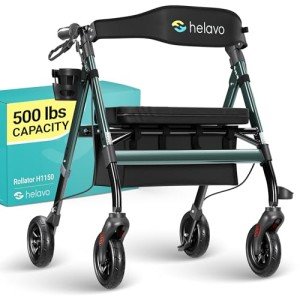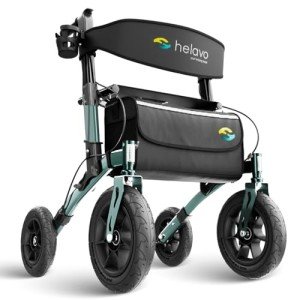15 Best Pinterest Boards To Pin On All Time About Reliable Walker
페이지 정보

본문
The Reliable Walker: Choosing the Right Mobility Aid for Your Needs
In an ever-evolving world where mobility obstacles can arise for different reasons, a reliable walker can significantly enhance an individual's quality of life. Individuals searching for independence in their motion discover that a walker, often referred to as a walking aid, plays an essential function in their everyday activities, whether they are recuperating from surgery, handling persistent pain, or experiencing age-related mobility issues.

In this blog site post, we will discuss the importance of a reliable walker, the different types offered, how to select the best one for your requirements, and some frequently asked questions.
Comprehending Walkers
Walkers are mobility devices that aid people with walking troubles. They provide stability and support, helping to prevent falls and enhancing confidence when navigating.
Kinds of Walkers
There are a number of types of walkers available, and understanding the differences can assist you make an informed choice. Below is a table summing up the main kinds of walkers.
| Kind of Walker | Description | Advantages | Drawbacks |
|---|---|---|---|
| Standard Walker | A fundamental walker without wheels, requiring users to lift it to move. | Supplies maximum stability; basic design. | Can be cumbersome; less maneuverable. |
| Two-Wheeled Walker | Equipped with two wheels at the front for much easier motion. | Easier to move; more lightweight. | Less Stable 4-Wheel Walker than a basic walker. |
| Four-Wheeled Walker | A wheeled walker with four wheels, often with a Padded Seat Rollator Walker and hand brakes. | Highly maneuverable; ideal for outdoor use; stability with seating. | Requires some upper body strength to operate the brakes. |
| Premium Rollator Walker | A four-wheeled walker with a seat and storage area. | Ideal for longer distances; comfortable seating choice. | Less stability than standard walkers; can be more expensive. |
| Hemi Walker | Developed for those who can use only one hand or lower limb. | Useful for one-handed support; lightweight. | Might not supply as much support as traditional alternatives. |
Key Factors to Consider When Choosing a Walker
Selecting the ideal walker is vital for security and independence. Here are some essential elements to think about:
1. User's Physical Condition
- Examine the user's balance, strength, and variety of motion. Some users may require more support and stability, while others might prefer something lighter and more mobile.
2. Intended Use
- Consider where the walker will primarily be utilized-- inside, outdoors, or both. Walkers designed for outdoor usage generally feature larger wheels.
3. Weight Capacity
- Make sure that the walker can support the user's weight. Many walkers feature weight capacity specs, normally varying from 250 to 500 pounds.
4. Adjustability
- Try to find a walker that can be changed in height to ensure proper posture and comfort while walking.
5. Extra Features
- Lots of walkers included features such as brakes, seats, baskets, and even built-in lights. Examine which features are needed for the user's needs.
6. Visual appeals
- While performance is important, lots of modern walkers are created with aesthetic appeals in mind. Select one that the user feels great about utilizing.
The Benefits of a Reliable Walker
Utilizing a reliable walker has a number of benefits, including:
- Increased Independence: Users can walk around on their own without relying heavily on others for support.
- Improved Confidence: A stable walker provides users the security they need to move freely, reducing the fear of falling.
- Enhanced Stability: Walkers substantially enhance balance, specifically for those with mobility problems.
- Enhanced Quality of Life: With enhanced mobility, users can engage more actively in social, recreational, and day-to-day activities.
Regularly Asked Questions (FAQ)
1. How do I understand if I need a walker?
If you find walking to be difficult, experience regular falls, have recently had surgery, or have persistent conditions impacting your mobility, it might be time to consider a walker.
2. Can I utilize a walker on outdoor surface areas?
Yes, but consider getting a four-wheeled walker or a rollator created particularly for outdoor terrains, as they generally have bigger wheels for much better maneuverability.
3. How can I change my walker for the best fit?
The majority of walkers have height-Adjustable Rollator Walker legs. Stand in your shoes, and with your arms relaxed at your sides, the top of the walker ought to be at wrist level.
4. How do I keep my walker?
Regularly check the walker for any loose screws or parts, make sure the wheels are moving efficiently, and tidy it occasionally to keep its condition.
5. How can I construct my confidence while utilizing a walker?
Start using the Durable Walker in familiar and safe environments. Slowly increase the complexity of your environments as you become more comfortable.

In conclusion, a reliable walker is not simply a mobility aid; it's a method to greater self-reliance, safety, and enhanced quality of life. Comprehending the types of walkers readily available and evaluating individual needs can assist individuals make informed options. Whether it's a standard walker or a modern rollator, the right equipment fosters independence and self-confidence in mobility.
If you or a loved one faces mobility challenges, consider investing in a walker that fulfills individual needs, boosts mobility, and eventually, enhances everyday living. With the ideal choice, users can take back control of their movement, fostering a more active and satisfying life.
- 이전글The Ultimate Guide to Buying Whisky Online 25.10.10
- 다음글20 Fun Infographics About Private Psychiatry 25.10.10
댓글목록
등록된 댓글이 없습니다.
